This is my first review as an author rather than guest reviewer at this blog, so I’ll start out with a classic figure, the UKRD Iguanodon from 1992. Iguanodon of course has the distinction of being the second named dinosaur genus (after Megalosaurus), and has remained relatively famous for a non-American dinosaur, even being the protagonist of a film, Disney’s Dinosaur.
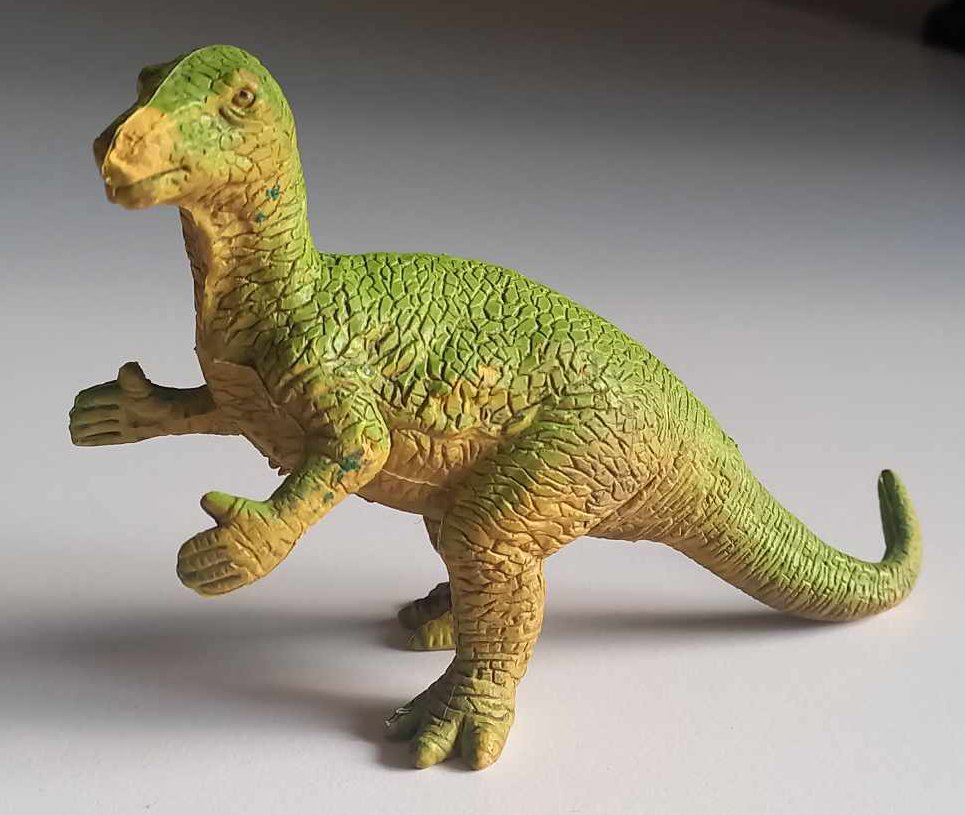
But Iguanodon is also one of the few unfortunate dinosaurs where the original material is no longer considered to confidently belong to that genus: the type species designation was moved from the original British type species Iguanodon anglicus, known from teeth and assigned fragmentary remains, to the completely known Iguanodon bernissartensis from Belgium in 2000. British specimens and species that had traditionally been assigned to Iguanodon were later placed in new genera, resulting in the name Iguanodon effectively having been transferred to the Belgian species, leaving classic depictions of Iguanodon, such as the Crystal Palace models, as chimaeras of all sorts of related genera, except Iguanodon itself.
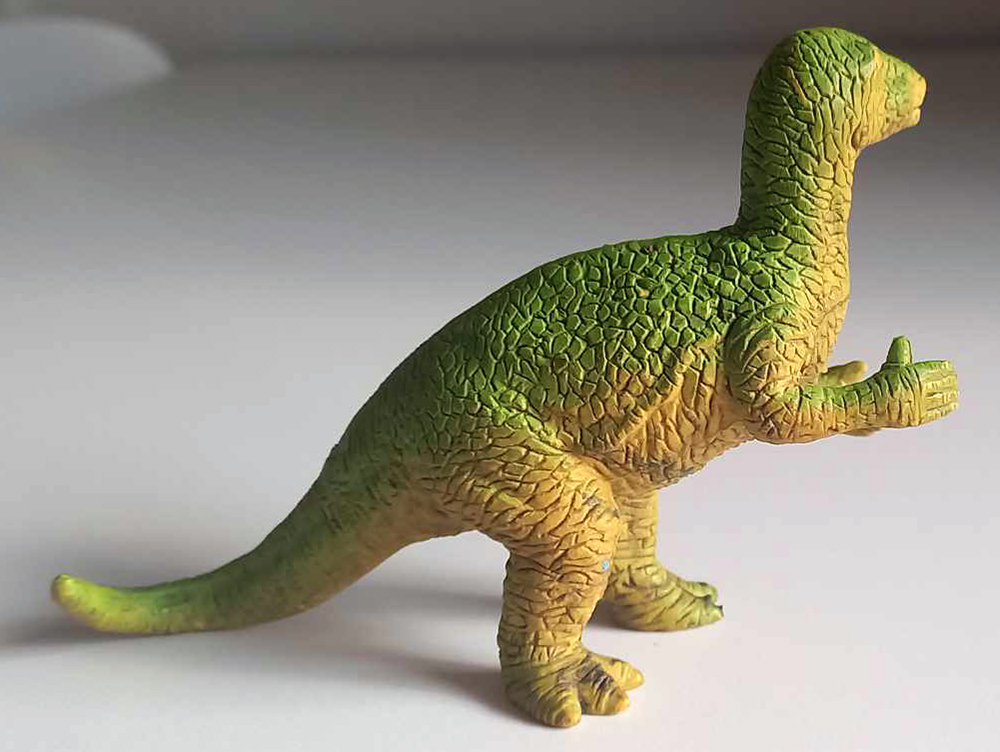
That leads us to the figure discussed here, because what does it then actually depict? As I’ve mentioned in earlier UKRD reviews, with a few exceptions, the figures were largely modelled after John Sibbick’s illustrations in David Norman’s 1985 book The Encyclopaedia of Dinosaurs, and the Iguanodon is a pretty good match with its depiction in that book. The illustration’s caption doesn’t specify what species of Iguanodon it depicts, but an adjacent skeletal diagram appears to show Iguanodon atherfieldensis, specifically the mount in the Natural History Museum in London, which has since been assigned to Mantellisaurus. I base this identification on its light built and rounded upper skull surface, compared to the robustly built Iguanodon bernissartensis, with it’s more flattened upper skull surface, and massive hands and thumb-claws.
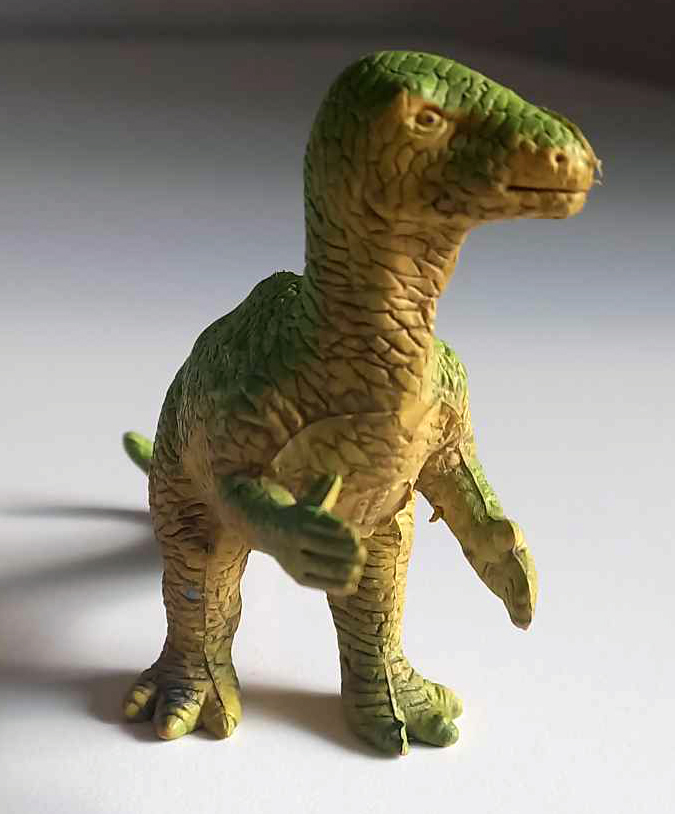
So what does Sibbick’s life restoration, and by extension, the figure depict? I’d say Iguanodon bernissartensis, since it seems robust and with massive hands and thumb-claws, and that would place it within the modern conception of what Iguanodon is (and that’s what’s stamped on its belly anyway!). But I could of course be wrong, and probably only Sibbick and Norman can clear up what species they depicted, leaving the possibility open that this could be Mantellisaurus, which would be interesting in itself, not exactly being a household name.
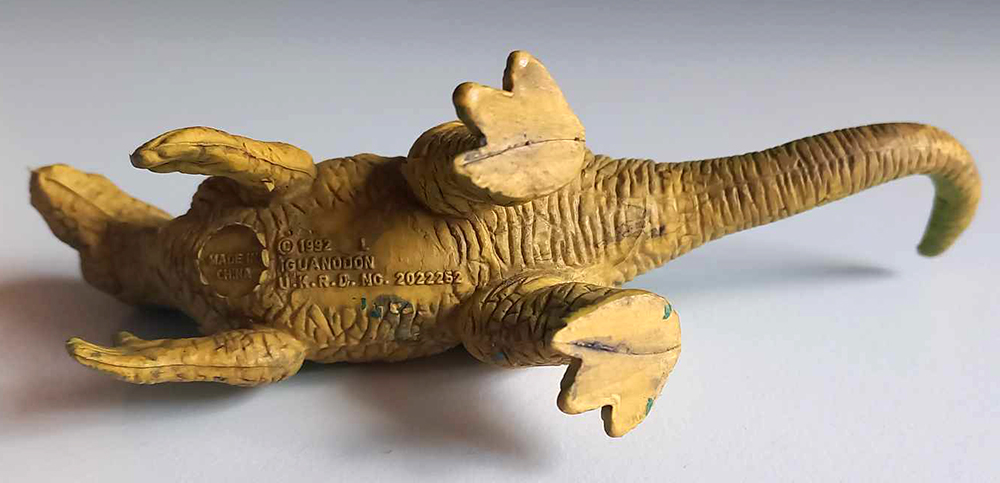
The figure matches Sibbick’s illustration in pose, proportions, and surface texture, with the skin being covered in massive scales and wrinkles. It’s unclear if the illustration shows a dragging tail, but it is an almost tripodal pose either way, which the figure takes further to make it stand stably: while the Bernissart Iguanodon skeletons famously had their tails broken so they could stand in a kangaroo-like pose, the illustration and figure have the tail sticking out more horizontally, avoiding the unnatural, sharp curve of those mounts. The most recognisable feature of Iguanodon, the thumb-claw, is sticking up, ready to be poked into the neck of a stalking theropod. The hands are also posed with their palms correctly facing each other, but the fifth outer finger is not poking out in the opposite direction of the claw as in the illustration (and reality), presumably because it would be prone to breaking off, being quite thin.
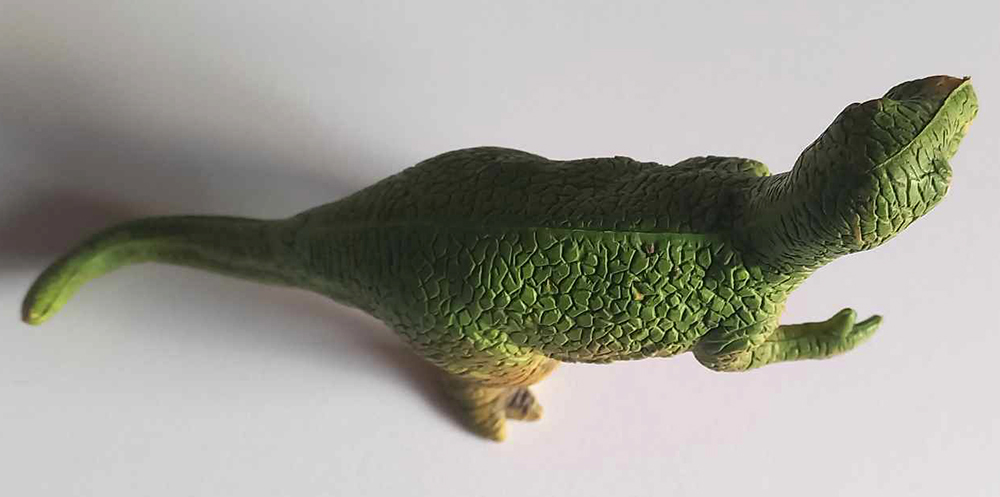
Unfortunately, the figure doesn’t seem to have a distinct beak, as the illustration does. Apart from the tail touching the ground, iguanodonts are thought to have been able to move both bipedally and quadrupedally, so the bipedal stance is fine. As usual, the colour is quite different from the illustration, with a sort of acid-green upper side and a yellow underside (seemingly the colour of the underlying plastic, as can be seen where the paint has worn off on my figure’s snout), whereas the illustration is a more drab dark green and grey, though with some interesting lighter green spots and patterns along its upper parts.
Size-wise, the figure is about 9 cm tall and 14 cm from snout to tail. While not really accurate to today’s standards, the figure is recognisable as Iguanodon, and apart from the tripodal pose and lack of a beak, it isn’t that inaccurate. As I usually repeat with these UKRD models, I think it’s also interesting in seemingly being based on some classic palaeoart, and has a nostalgic value to myself and others who grew up as dinosaur-obsessed kids in the 90s. Like the other UKRD figures, I can’t imagine it would be hard to find today, having been mass-produced.
Disclaimer: links to Ebay and Amazon on the DinoToyBlog are affiliate links, so we make a small commission if you use them. Thanks for supporting us!




I always liked this figure. It reminded me of the animatronic Iguanodon in the documentary series DINOSAUR with Walter Cronkite.
@dinotoyblog I used to have this as a child, donated it to a nursery years and years ago
Remote Reply
Original Comment URL
Your Profile
Great review of a charming figure. 4 stars!